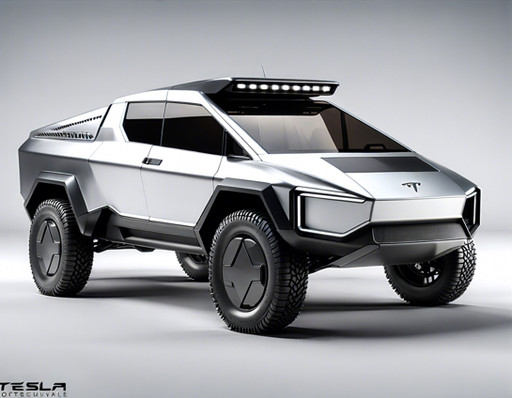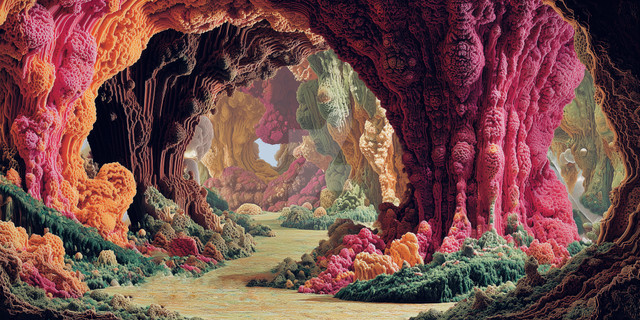HOME | DD
 NyrathWiz — AsteroidMiningCrewTransport
NyrathWiz — AsteroidMiningCrewTransport

Published: 2015-04-13 00:07:12 +0000 UTC; Views: 5790; Favourites: 55; Downloads: 63
Redirect to original
Description
A nuclear fusion mining transport from a 1981 Boeing report commissioned by NASA (the artwork from the report is in the lower left corner.Details can be found here:
www.projectrho.com/public_html…
The nose of the spacecraft is in the upper left corner with the tanks on girders. The tail of the ship is at the lower right corner with the engine.
It has a delta V of 51 kilometers per second, and can deliver 1250 miners with 150 metric tons of cargo to Ceres asteroid base in 250 days flat.
The triangular things are huge heat radiators because the engine has to get rid of 2.8 Gigawatts of waste heat.
The heat radiators are triangular, so that they can stay inside the shadow cast by the anti-radiation shadow shield . This is for three reasons:
Related content
Comments: 23

Very interesting design, and even more interesting discussion in the comment section, here.
How does this fit 1,250 crew onboard though? That seems a bit absurd, considering that space-shuttle there for scale. I'd think this would fit 10 or so people, not more than a thousand.
👍: 0 ⏩: 1

Those orange tanks that you see extended out from the nose are Shuttle External Tanks. It seems that there are about three on a single arm and there are three arms, so there would be about 9 total tanks for habitation/other stuff. A single ET has about 2050 meters^3 of volume, and so the total volume of all the fuel tanks would be about 18450 m^3. If only six tanks were dedicated to crew-rooms and everyone has 10 m^3 of space (the performance limit)... you could hold about 1230 crewmembers. Close enough to 1250.
👍: 0 ⏩: 1

I guess my feeble mind hadn't really grasped the internal volume of those re-purposed tanks.
Still, I think those numbers are a little off kilter, personnel are required in space yes... but the hardware is more often than not more important. 'Only' 150 tonnes of cargo is very little, considering how much of that would be devoted to living supplies.
👍: 0 ⏩: 1

I noticed that as well, and it seems that the water required (were it not reused) would nearly fill the entire spaceship with water, creating what would probably be the world's most expensive and largest water bottle.
👍: 0 ⏩: 0

Great work Nyrath, as always! The discussion shows the difficulties to match physical requirements with a credible SF setting.
On the radiators: I think the texture is too arbitrary. The coolant will flow in pipes. The mains will be in the center truss, with branches extending outwards. So the basic pattern could be linear, extending radially from the truss. At this scale it may look the moire'-pattern on the back side of a CD, because the individual lines are too closely spaced to be seen.
The basic colour may be somewhere between dull black (best emission coefficient) and shiny metal (best conductivity).
Even at the slightest acceleration it will be an engineering nightmare to build radiators as thin as these, compared to their span. They would wobble and buckle. Helpful would be some stiffness in thickness-direction, e,g, using stringers, or corrugations, or a saw-tooth profile.
👍: 0 ⏩: 1

All good points!
The texture was just one I had handy. I like your linear moire pattern idea. It is always hard to figure a texture that makes the model look huge, far too often they look like toys.
Radiator color is always a pain when you have two diametrically opposed parameters you are trying to optimize for. For what it is worth the Space Shuttle radiators were shiny, while the ISS look sort of dull.
I had unscientifically figured that the radiators sort of hung downward from three rods extending at 90 degrees from the ship's spine (with "down" being "the direction the thrust travels"). In other words along the leading edge of the radiators.
Under acceleration the rods would be stressed to have the tips sag. So you'd add secondary rods to support the tips. Which would wind up being along the hypotenuse, the other edge of the triangular radiators.
You have a good point about wobbling and buckling. I'd use your stringer idea and run a series of cable between pairs of radiators.
👍: 0 ⏩: 0

Nice work Win! Several adjustments may be required. Firstly, the texture of the radiators makes them look way too heavy, though it does look a lot like the plumbing that'd be needed. Secondly, the Orbiter in the illustration is probably the Mixed-Fuel SSTO from the Reference 91. It was ~67 metres long, so much bigger than the Shuttle Orbiter. The crew habitats probably aren't repurposed ETs. Very nice work even so.
👍: 0 ⏩: 1

Yeah, agreed. If the other shuttle-like illustrations in the same report are all of the 67 meter shuttle, the one with the fusion ship probably is as well.
But even scaled for a 37 meter shuttle the ship has approximately 19,200 square meters of heat radiator surface.
Which makes sense, it has to handle 2.8 GW of waste heat.
The texture was a quick-n-dirty add on from my poor list of stock textures. At that scale you will probably not even see any plumbing.
What would heat radiator plumbing look like? (the Shuttle Orbiter's is all hidden under plates) Would it be rectilinear or something fancy like a fractal?
I sure hope Scott Lowther succeeds with his FOI request, and the report has more details about the spacecraft.
👍: 1 ⏩: 0

Nice to see an illustration that pays attention to engineering details like dumping waste heat.
👍: 0 ⏩: 1

You can say that again! The lack of heat radiators is my second greatest peeve about unscientific spacecraft.
www.projectrho.com/public_html…
My first greatest peeve is spacecraft whose decks are arranged like boats, at right angles to the thrust axis. I'm looking at YOU Starship Enterprise.
👍: 0 ⏩: 1

Not as if Star Trek pays any attention to physics. If they acknowledged stuff like inertia, acceleration or gravity, they'd all be squashed flatter than the bugs on my windshield.
👍: 0 ⏩: 1

Oh, it's not just Star Trek. Pretty much all major media SF thinks that starships are boats. Star Trek, Star Wars, Battlestar Galactica, etc.
👍: 0 ⏩: 0

downloadpsd.com/images/Paper-P…
Sorry, had to. XD
Still, nice work!
👍: 0 ⏩: 1

Yes, it does look like a paper airplane, but I'm just copying from the original report.
👍: 0 ⏩: 1

I know. Just thought it was funny.
👍: 0 ⏩: 0

The neutron radiation issues are giving me second thoughts about torchships. There's probably a good bit of sunshine from their propulsion systems that you don't want the crew absorbing...
I guess it's time for me to work more extensive booms into my civilian transports, it doesn't seem like smaller drums will do the trick.
👍: 0 ⏩: 1

Keep in mind that the ship pictured is using Deuterium-Deuterium fusion, which produces distressing amounts of neutrons.
Deuterium-Helium3 is practically free of neutrons, it is just that Helium3 is so rare.
Hydrogen-Boron is also practically free of neutrons, but it has such an absurdly high Lawson criterion that nobody has managed to ignite the reaction.
www.projectrho.com/public_html…
👍: 0 ⏩: 1

I was thinking D-T because I'm kind of a pessimist. Maybe I should just embrace D-He3, since it's a midfuture setting that has had time to work on its fusion reactors.
In any case, it looks like I'll need to rebuild my scaling spreadsheets again. After exams.
👍: 0 ⏩: 0

Nice one man, never saw this design before.
Love the backlight.
g
👍: 0 ⏩: 0

Cool, Winch! Back when Shuttle main fuel tanks were a commodity to be exploited. Too bad it never happened....
👍: 0 ⏩: 1

Agreed! What a waste to just ditch them into the ocean after spending all that fuel to lift then into orbit.
👍: 0 ⏩: 0

Good work! I'm going to assume the three big fin like structures are the heat radiators.
👍: 0 ⏩: 1

Got it in one!
Blasted engine has to get rid of 2.8 gigawatts of waste heat. That's why the radiators are so huge.
👍: 0 ⏩: 0

























